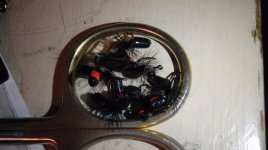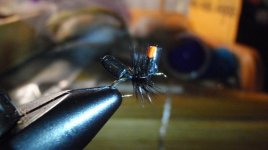I've started using fur ant patterns (size 18 - 20) the past few summers with moderate success. Sometimes I'm able to get a rising fish to take a small ant after refusing just about everything else.
My question is has anybody had success fishing ants and beetles as "searching" patterns (ie. nothing rising at the time)? I'm talking about generally realistic patterns not Chernobyl Ants.
I've read that people do have success with these as a searching dry, but I'm so used to using large Stimulators, Humpies, etc. as an attractor that I lack confidence a non-rising fish would move for a small ant or beetle pattern on the surface, particularly on the Catskill tailwaters. Is my skepticism warranted?
Also I usually don't start using ants until late July early August. Perhaps I should start using them earlier in the spring?
Thanks.
Zonk
My question is has anybody had success fishing ants and beetles as "searching" patterns (ie. nothing rising at the time)? I'm talking about generally realistic patterns not Chernobyl Ants.
I've read that people do have success with these as a searching dry, but I'm so used to using large Stimulators, Humpies, etc. as an attractor that I lack confidence a non-rising fish would move for a small ant or beetle pattern on the surface, particularly on the Catskill tailwaters. Is my skepticism warranted?
Also I usually don't start using ants until late July early August. Perhaps I should start using them earlier in the spring?
Thanks.
Zonk


